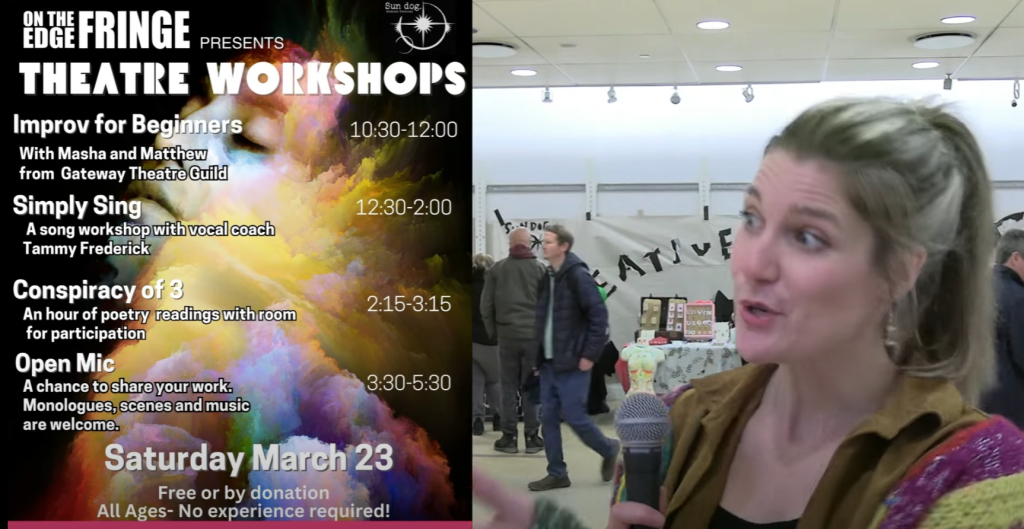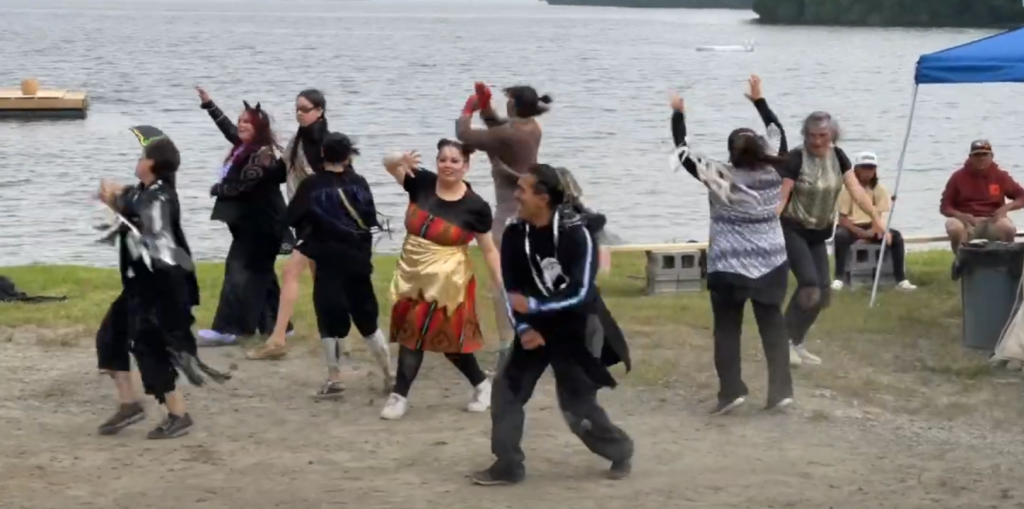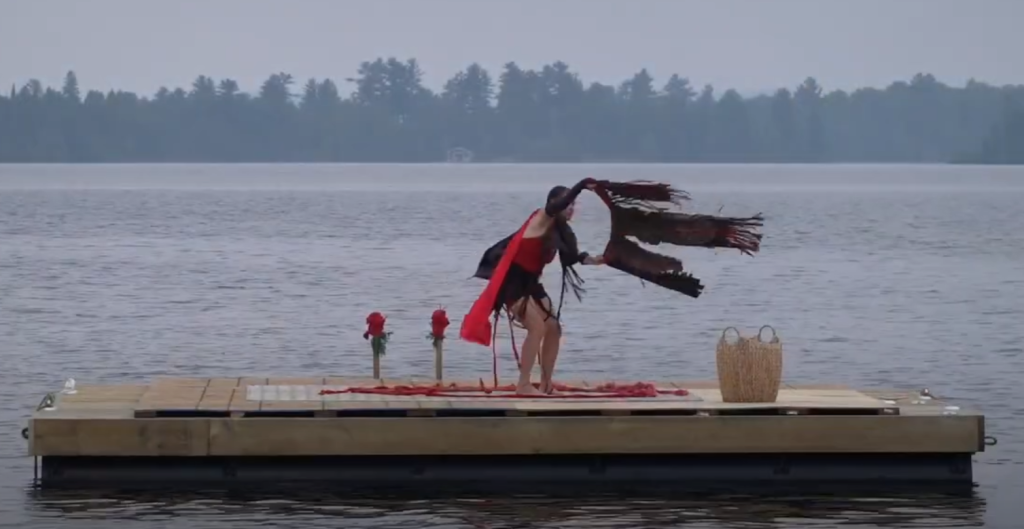This year-long research project explored organizational onboarding and health-focused cross-disciplinary training programs working with emerging artists from various backgrounds. I was able to work alongside multiple employees to explore constraints and opportunities to better understand the systems available to them and how they are accessing them.
I have been working in the arts conducting research and creating supports for many years working for various governments and arts organizations and now specifically focus on how to promote healthier relationships and understand the intersecting points between qualitative and quantitative research especially when considering relational and transactional factors in the arts and how they pertain to healthy environments. Evidence of this work can be found in previous positions at the Indigenous Curatorial Collective, CARFAC National, Canada Council for the Arts and with groups currently involved such as the Cultural Pluralism Arts Network of Ontario and the Artist-Run Centres and Collectives Conference.
“Cultural Diplomacy – Respect and Mutual Benefit” is an independent project evaluating employment behaviours seeking to profile actions in a sharable format creating a roadmap document and articles. This format of reflecting upon actions will also open as an evaluative report that can be utilized by partnering organizations to revise, build or deconstruct existing infrastructures as needed.
This preliminary research exploration considered processes for artistic creation as in-person collaborations during 2023. By meeting with members of the Fabulous Festival of Fringe Film, the ON THE EDGE Fringe Festival, Aanmitaagzi, Friday Creeations, I was able to consider models of collaborative codesign and the current processes taking place between physical spaces.
My goal for this process was to lead several collaborative discussions with presentations as outcomes sharing work being done and ensuring that community input and direction are ongoing. I remained in a limited capacity at my day-jobs while dedicating full-time effort to the proposed research and development plan allowing me to work with peer organizations and establish healthier frameworks for emerging arts professionals of many backgrounds. I supported my peers in seeking replacements during my leave and have hired an exceptional emerging arts professional who will be staying on in a permanent position now that the project is completed.
Organizational motivations were low as no ongoing resources are being committed to activations. This is a result of operating in physical spaces exclusively prior to the pandemic. There is an interest but not enthusiasm or understanding to activate. This was expected and a large part of the work was to conduct an assessment of motivations and pathways forward for the producing companies and festivals.

Kelsey Ruhl, artistic director for the ON THE EDGE Fringe Festival at Northgate Square shopping centre organizing theatre workshops
Within all participating groups, apathy has become overly present as previous health restrictions had been lifted allowing in-person gatherings again allowing flexibility in scheduling and consideration about how the new environments can be utilized in an intentional way instead of as a necessity.
With such flexibility, arts groups are developing projects that may seek to meet in person based on the needs of the members and the timing involved in the meetings. Some meetings are in person allowing for interpersonal exchanges to be meaningful while quicker sessions allow for updates and logistics to be established between parties without adding to travel time in a rural area.
Travel within the region is a major factor for those involved as moving between spaces can take a large majority of a daily work period if meetings are all in person. Although all parties stress the importance of having in-person meetings as a necessity for healthy development and interactions.
These sessions allowed me valuable time to witness and reflect upon decision making processes for artistic creation. Discussions that took place opened to ideas about how plans can be adapted towards self and become behaviours. These conversations take shape as roadmaps that can empower others to utilize and consider when physical meetings are appropriate or to utilize actions when it suits the situation.
Although a basic statement of this type seems unnecessary, depending on the communities involved, exploring and establishing these roadmaps for communication are a necessary negotiation to ensure mutual benefits of working together remain relevant by all parties. Feeling collective and in control is key to building group enthusiasm. Researching utilization within collaborative arts creation is not unique nor overly innovative but profiling our specific cases allows us to see parallels between needs and apply a pathway towards self.
A consideration is that several of the events that took place within these groups were monitored and co-designed between partnering groups adding additional contextual information about pathways to subjects such as governance, planning and implementation.
Conducting this research as hands-on with partners allowed for mutual benefits between parties to be negotiated ongoing and for the benefits of outcomes to be shared. An important note is that organizations rarely have the time and capacity to reflect on actions from an arms-length perspective. These actions add additional oversight to their existing processes rationalizing behaviour into contexts agreed upon by all parties.
Partnering groups evaluate actions as a assessment of behaviours influencing future actions. The research itself is a direct benefit to the participating team and the arts environment as focused effort in evaluating actions has impacts on the arts ecosystem in general.
Moving forward, I plan to continue to explore this area of research and publish articles promoting and celebrating the groups involved while being resources to other artists and arts groups providing understanding on processes. Measuring impact will be done ongoing by each group as sharing online independently shared through partnering groups and social media channels impacts each other and the larger arts sector. The success of this project is dependent on maintaining relationships as creation processes are conducted and I plan on continuing to work with these groups for the rest of my life. They are my friends and my colleagues and although I am working to better understand relationships, there is no denying my own bias in caring about everyone.
I have worked within community arts and held leadership positions within various organizations including the White Water Gallery, Indigenous Curatorial Collective and now within the Artist-Run Centres and Collectives Conference. I have worked with Business for the Arts’ ArtsVest program and mentored 100+ arts organizations in governance and promotion. I have mentored more than 100 youth through Canada Summer Jobs, Young Canada Works and various employment programs ensuring that all mentees were paid for their time while learning engagement within the arts sector. Several of my previous employees have now gone onwards to their own leadership positions within organizations and universities across Canada. I will continue to support the new generation entering the workforce for several years to come and feel confident that others will continue this discussion with me or on their own to ensure that temporary employment becomes more beneficial to all parties long term.
This work was supported by the Ontario Arts Council Chalmers Fellowship Fund.

